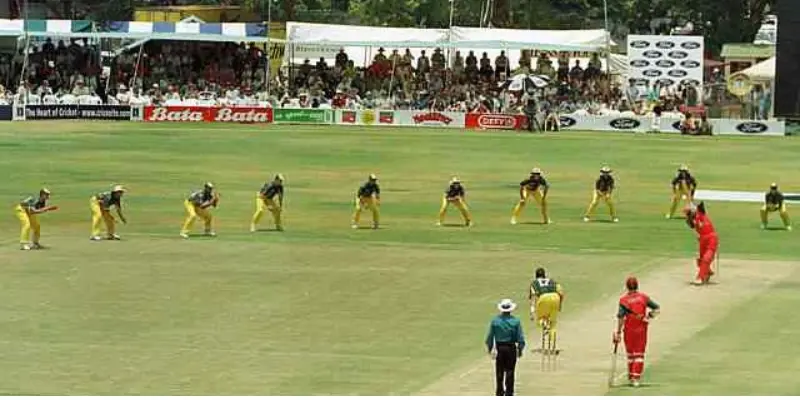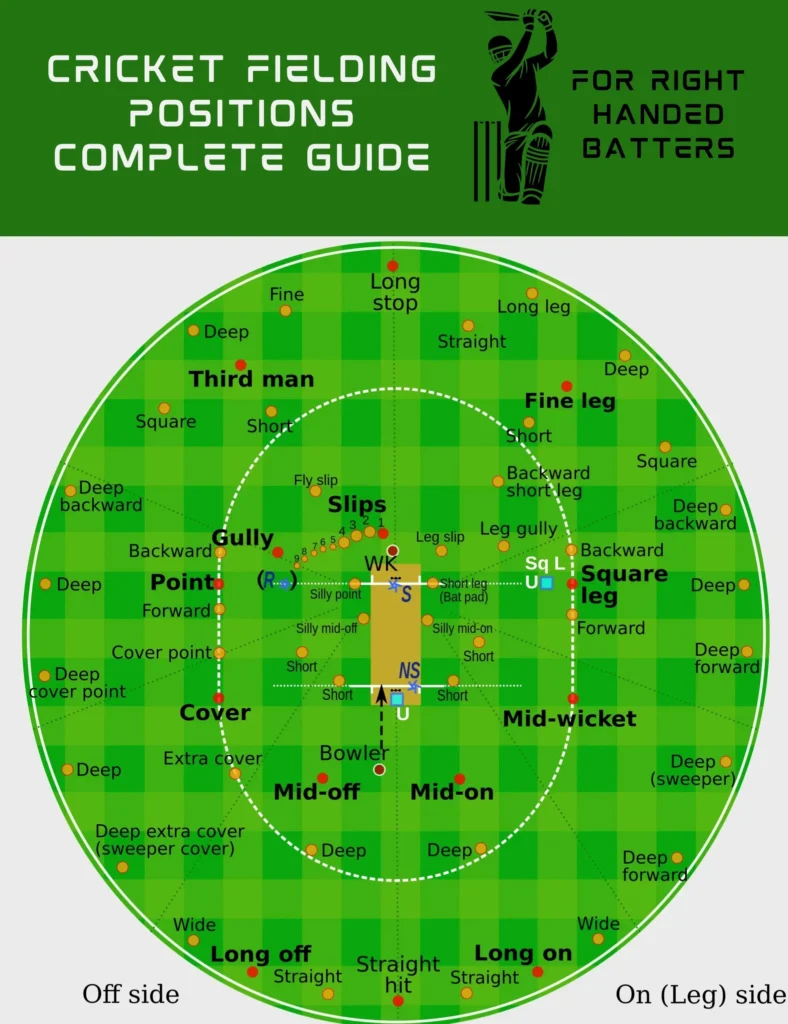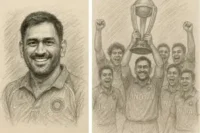Do You Know All Fielding Positions in Cricket?
Published: 27 Dec 2024
Fielding positions in cricket are more than just names—they’re a critical part of the game’s strategy. In total, there are over 30 recognized fielding positions, each designed to cover specific areas of the field. These positions are determined based on factors like the bowler’s style, the batter’s strengths, and the match situation.

Some positions, like slips and gully, are used to catch edges from fast bowlers. Others, like deep mid-wicket or long-off, are placed to stop big hits. The placement of fielders can directly influence how many runs are scored or how quickly wickets fall.
By understanding all the fielding positions, you can appreciate the tactical side of cricket and see how every player on the field has a role to play in shaping the game.
Complete Ground Positions for Cricket Fielding

Off-Side Fielding Positions in Cricket
1. Slip
Distance: About 5–10 meters.
Angle: Directly behind the batter at an angle to the off-side.
Reason: Slip fielders are placed to catch balls that are edged by the batter but don’t go directly to the wicketkeeper. They are there to take catches from balls that miss the bat slightly.
2. Gully
Distance: 10–15 meters.
Angle: At a 45-degree angle to the batter’s stance.
Reason: Positioned between the first and second slip, the gully fielder is there to catch balls that are edged off the bat but go slightly wider. It’s perfect for defensive shots that miss the bat.
3. Point
Distance: Around 15–20 meters.
Angle: To the side, usually at a 90-degree angle to the batter’s stance.
Reason: The point fielder is there to stop or catch balls played on the off-side, such as cut shots or defensive shots. This position helps prevent quick singles and stop any potential edges.
4. Cover
Distance: About 15–20 meters.
Angle: At a 45-degree angle to the batter, slightly behind their shoulder.
Reason: Cover is placed to stop drives or shots played through the off-side. It’s crucial for stopping boundaries and cutting off runs when the batter tries to drive the ball.
5. Extra Cover
Distance: 20–25 meters.
Angle: Slightly behind the cover fielder at a sharper angle to the off-side.
Reason: Extra cover is positioned just behind the cover to stop more powerful drives or fast balls that might go past the initial cover fielder. It’s there to protect the boundary and stop well-timed shots.
6. Mid-Off
Distance: Around 20–25 meters.
Angle: Directly in line with the batter’s line of sight, but slightly to the off-side.
Reason: Mid-off is placed to stop straight drives or any shots played off the front foot. It’s a key position to prevent boundaries or quick singles off aggressive shots.
7. Deep Point
Distance: 30–40 meters.
Angle: Positioned further behind the batter’s stance, near the boundary.
Reason: Deep point is placed to catch balls that are cut or driven firmly to the off-side. This position is used to prevent boundaries from strong off-side shots and to stop well-hit balls.
8. Deep Cover
Distance: 30–40 meters.
Angle: Positioned toward the boundary on the off-side.
Reason: Deep cover helps prevent boundaries from powerful off-side drives or aggressive shots. It’s placed deep to stop balls from reaching the boundary line.
9. Third Man
Distance: 30–40 meters.
Angle: Slightly behind the batter, positioned at an angle to the off-side.
Reason: Third man is placed behind the batter to stop balls that are glided or edged past the slips. This fielder is crucial for preventing boundaries and managing runs off edges that miss the wicketkeeper.
10. Wide Mid-Off
Distance: 20–25 meters.
Angle: Positioned wider than a standard mid-off.
Reason: This fielder is positioned wider than mid-off to cover any wide drives or balls that are hit slightly off the off-side. It’s a good spot to stop balls going past mid-off to the boundary.
On-Side Fielding Positions in Cricket
1. Leg Slip
Distance: About 5–10 meters.
Angle: Directly behind the batter, at an angle to the on-side.
Reason: Leg slip is positioned to catch balls that are edged from the batter’s on-side shots. This fielder is placed to catch deflections that might come off a defensive or loose shot played on the on-side.
2. Short Leg
Distance: 5–10 meters.
Angle: Directly in front of the batter, close to the batter’s on-side.
Reason: Short leg is there to catch balls that are hit in the air, often from a batter playing a defensive shot. It’s a key position to take catches off short-pitched deliveries or balls played off the glove.
3. Mid-On
Distance: Around 20–25 meters.
Angle: Directly in front of the batter, on the on-side.
Reason: Mid-on is placed to stop straight drives and shots played on the front foot. It’s crucial for cutting off boundaries or preventing easy singles from powerful on-side shots.
4. Deep Mid-On
Distance: 30–40 meters.
Angle: Positioned deep on the on-side, near the boundary.
Reason: Deep mid-on is placed to stop powerful on-side shots, especially long drives or pulls. It’s designed to cut off boundaries and prevent runs from powerful hits aimed towards the on-side.
5. Backward Square Leg
Distance: About 15–20 meters.
Angle: Positioned behind the batter on the on-side.
Reason: This fielder is placed to catch or stop balls that are pulled, cut, or glided off the batter’s on-side shots. It helps prevent boundaries from strong pulls or flicks.
6. Square Leg
Distance: Around 15–20 meters.
Angle: Positioned beside the batter, at a right angle to their stance.
Reason: Square leg is a key position to catch balls from shots that are played to the side, like pulls or flicks. It also helps to stop quick singles or prevent boundary shots from pull shots or flicks.
7. Fine Leg
Distance: 20–30 meters.
Angle: Positioned behind the batter at a wide angle to the on-side, closer to the boundary.
Reason: Fine leg is placed to stop balls that are pulled, glided, or flicked down the leg side. This position is crucial for stopping boundaries from shots that get deflected or played towards the fine leg region.
8. Deep Fine Leg
Distance: 30–40 meters.
Angle: Positioned further back, near the boundary.
Reason: Deep fine leg is placed to cut off boundaries or save runs from aggressive shots that go down the leg side. It’s especially important for stopping deflections and pulled shots from going to the boundary.
9. Long Leg
Distance: 30–40 meters.
Angle: Positioned deep on the leg side.
Reason: Long leg is a deep fielder used to stop powerful leg-side shots that are played behind the batter. It’s important for preventing runs from pull shots or flicks that get driven towards the boundary.
10. Mid-Wicket
Distance: 20–25 meters.
Angle: Positioned to the side of the batter, at a 45-degree angle to the on-side.
Reason: Mid-wicket is placed to stop drives, flicks, or pulls. This fielder is key in cutting off powerful shots or preventing quick singles.
11. Deep Mid-Wicket
Distance: 30–40 meters.
Angle: Positioned further deep towards the boundary, on the on-side.
Reason: Deep mid-wicket is placed to stop powerful drives and pulls from going for boundaries. It’s a key position for preventing well-struck shots from reaching the boundary line.
Close Position Fielders in Cricket
1. Wicketkeeper
Distance: Directly behind the batter, at the stumps. Right onto the stumps when spinners are operating otherwise at a distance depending on the pace of the bowler.
Angle: Straight behind the batter.
Reason: The wicketkeeper is the closest fielder to the batter, responsible for catching balls that miss the bat or stumping batters. They also keep an eye on edges that go behind the batter and act as a last line of defense for the team.
2. Short Leg
Distance: About 5–10 meters.
Angle: Directly in front of the batter on the on-side.
Reason: Short leg is positioned to catch balls that are hit in the air, often from defensive or poorly played shots. This fielder is close to the batter and can take quick reflex catches, particularly off short-pitched deliveries.
3. Leg Slip
Distance: About 5–10 meters.
Angle: Slightly behind and to the side of the batter on the on-side.
Reason: Leg slip is used to catch balls that deflect off the batter’s leg or gloves. It’s a crucial position for catching edges that go behind the batter or shots that are played off the inside edge.
4. Forward Short Leg
Distance: 5–10 meters.
Angle: Slightly in front of the batter on the on-side.
Reason: Forward short leg is placed slightly ahead of the batter to catch balls hit in the air off the batter’s body. This position is most effective when the bowler is delivering short-pitched or aggressive deliveries aimed at the batter’s body.
5. Silly Point
Distance: 5–10 meters.
Angle: Close to the batter, positioned to the off-side, often near the batter’s head or chest.
Reason: The silly point fielder is positioned extremely close to the batter on the off-side, usually to catch balls that are deflected from the bat or body. This is a high-risk position but can result in quick reflex catches.
6. Short Third Man
Distance: About 5–10 meters.
Angle: Slightly behind and to the side of the batter on the off-side.
Reason: Short third man is placed to catch balls that are glided or edged off the bat but don’t make it to the slips or wicketkeeper. It’s used to stop sharp edges that might go towards the boundary or to stop quick singles off the edge.
7. Silly Mid-Off
Distance: 5–10 meters.
Angle: Positioned directly in front of the batter, on the off-side.
Reason: Silly mid-off is placed extremely close to the batter to catch deflections off the bat or body from deliveries on the off-side. Like silly point, it’s a high-risk but high-reward position designed to force mistakes from the batter.
8. Silly Mid-On
Distance: 5–10 meters.
Angle: Positioned directly in front of the batter, on the on-side.
Reason: Silly mid-on is similar to silly mid-off but placed on the on-side. It’s used to catch quick reflex balls that are played off the bat or body, especially from short-pitched deliveries aimed at the batter’s body.
9. Batting Pads Fielder (On-Side)
Distance: 5–10 meters.
Angle: Directly in front of the batter or positioned to one side.
Reason: This fielder is placed to stop balls that may deflect off the batter’s pads or body. It helps stop any potential runs and may also catch balls that strike the body but aren’t hit clearly.
Conclusion
Fielding positions in cricket, whether close or deep, are all about strategy, precision, and creating pressure on the batter. Every fielder has a crucial role to play, from stopping boundaries to catching edges, and ensuring the batter has limited options to score. Close fielders are essential for quick reflexes and stopping deflections, while deep fielders cover a larger area to prevent powerful shots from reaching the boundary. The balance between close and deep positions ensures a well-rounded defense that maximizes every opportunity. Ultimately, effective fielding is key to building pressure, taking wickets, and winning matches.

- Be Respectful
- Stay Relevant
- Stay Positive
- True Feedback
- Encourage Discussion
- Avoid Spamming
- No Fake News
- Don't Copy-Paste
- No Personal Attacks

- Be Respectful
- Stay Relevant
- Stay Positive
- True Feedback
- Encourage Discussion
- Avoid Spamming
- No Fake News
- Don't Copy-Paste
- No Personal Attacks





